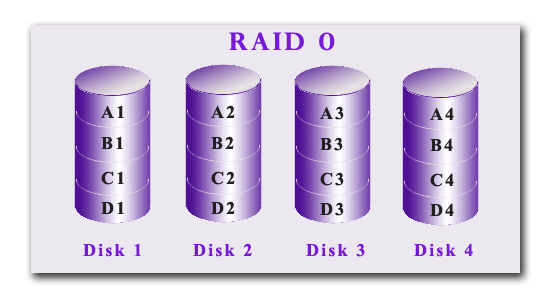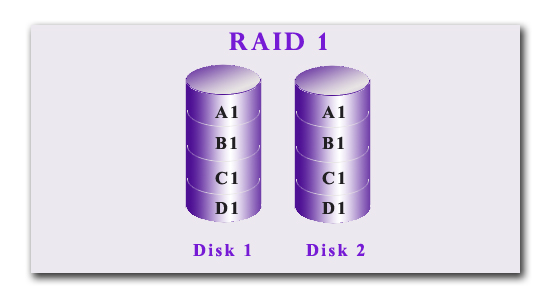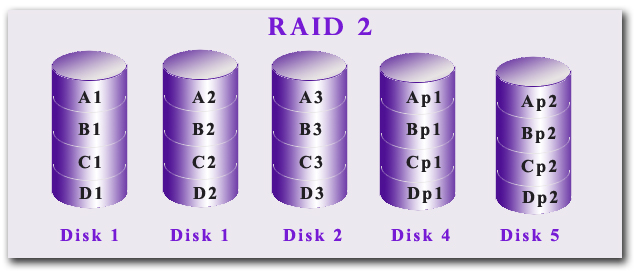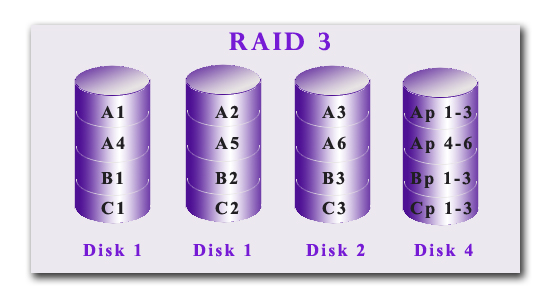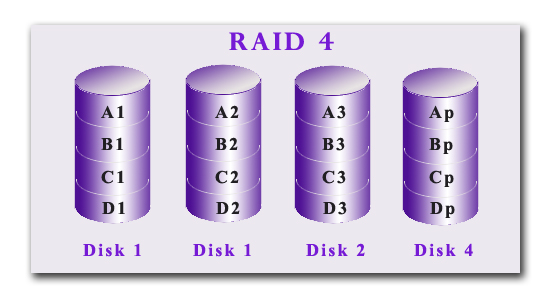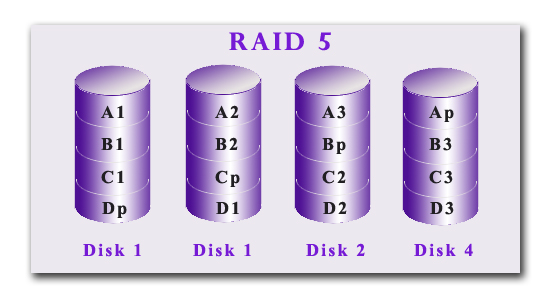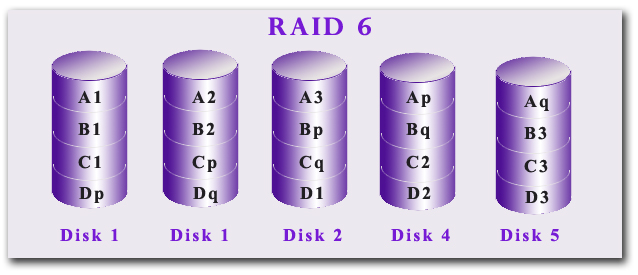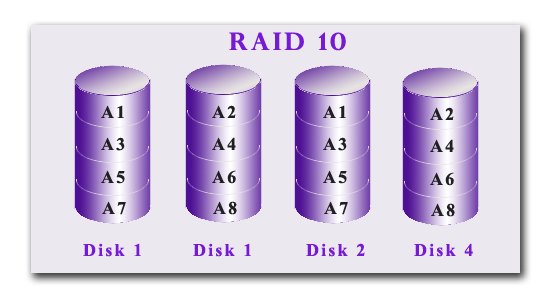What is RAID?
RAID (redundant array of independent disks, originally redundant array of inexpensive disks) is a storage technology that combines multiple disk drive components into a logical unit. Data is distributed across the drives in one of several ways called "RAID levels", depending on what level of redundancy and performance is required.
The main idea behind RAID is to take some inexpensive disks and group them together, which will make the system see them as one single disk. This is done by using a RAID controller card that handle all I/O to the disks, and which knows where the stored data can be found.
RAID works in three different ways to provide the quality attributes mentioned above. These ways are mirroring, striping and parity, of which each can be used either separately or mixed with one or more of the others. This is why RAID is divided into different levels.
RAID has for a long time been something that you only find in large server systems, but lately cheaper RAID controller card have made it possible to get a RAID system even for small servers and home computers.
RAID Recovery
Our skilled technicians have the experience to recover any RAID combination. We continue to achieve such a perfect success rate due to our professional team who deals with all kind of RAID Data Recovery (like RAID 0, RAID 1, RAID 10, RAID 01, RAID 5 and RAID 6).
Here are some examples of the platforms & server hardware we support:
- Novell NetWare (FAT & NSS-based platforms).
- Multi-server enterprise data centers.
- Apple Mac OS X Server.
- Intel & Non-Intel UNIX platforms, including Solaris, Linux, FreeBSD, UnixWare, SCO, and more.
- Microsoft Windows Server platforms, including Server 2008, Server 2003, and Windows 2000.
- Network hard drives.
- Virtual server architecture.
- Desktop & rack-mounted NAS servers.

